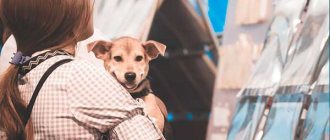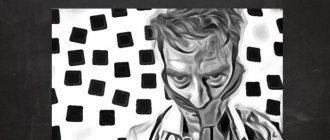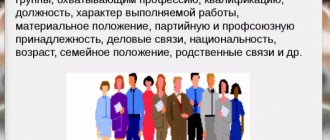Appearance of an asthenic
There are three body types in people:
- asthenic;
- normosthenic;
- hypersthenic.
Asthenics, normosthenics and hypersthenics differ in height, weight and chest circumference.
Normosthenic body type is the most ideal. Usually these are people with good strength, vitality, and athletic body structure. Their mental state is quite stable, most often they are extroverts.
Hypersthenics are dense people; people say about them “heavy in bone.” Such people tend to be overweight and slow.
An asthenic person differs from a normosthenic person in both physique and character. If for normosthenics everything is “normal”, then asthenics are far from it.
Asthenic physique:
- Very long and narrow limbs, neck, fingers.
- Narrow face.
- Small muscle mass.
- Narrow shoulders.
- The chest is sunken.
- The skin is pale, dark circles under the eyes are often visible.
Asthenics gain weight poorly. This applies to both men and women. But if you decide to lose weight, you won’t have to wait long for results.
Girls generally have a boyish figure: small breasts, flat buttocks, wide waist. Often their body is underdeveloped, since few female sex hormones are produced.
Men often look like they are constantly tired and clumsy because they have little muscle mass. Even constant training in gyms will not help change the type of asthenic; the man will still look like a lean, wiry person.
Differences between normosthenics and others.
The normosthenic type is characterized by almost ideal ratios of fat and muscle tissue, proportionality of all parts of the body. This figure always looks fit and athletic.
Normosthenics are also called mesomorphs, and they are divided into ectomorphs, who are more prone to thinness, and endomorphs, who are prone to a small amount of body fat.
In any case, a normosthenic constitution presupposes being slim, and even with an excess of fatty tissue, by following a diet and some physical exercise you can always get rid of extra pounds.
Childhood and youth
In childhood, they have a weak nervous system, very low self-esteem, and are very suggestible. Asthenics are obedient, timid, shy, touchy children. They need to constantly feel that their parents love them and care about them. To prevent trouble from happening, parents should encourage their child more, approve of his actions, and instill in him self-confidence.
An asthenic teenager is often frail, stooped, and has a difficult position at school, as he is very timid. It seems to him that he is unattractive, so the child tries to become as inconspicuous as possible.
AMBIVALENCE
Only at first glance does the behavior of an asthenic seem unambiguous. It is ambivalent, dual. The personality of an asthenic is a complex structure of a fragile, almost elusive core on which axes are strung.
Their poles are opposite signs, seemingly mutually exclusive. At the poles of the axis there are properties that make up the plus and minus, the strength of the personality and its weakness.
Serving people is a tendency to occupy low ranks. As soon as an asthenic person develops a hierarchy of values and life goals are determined, the most important thing becomes the idea of service, increasing the potential for good in the world. Asthenics strive to serve others while remaining invisible. Being able to do good to others brings them joy and peace.
However, the great idea of serving others often turns against its owner. It transforms into weakness, into a tendency to recognize the rights of other people against the backdrop of diminishing one’s own rights and suppressing one’s desires.
Any community, any social group resembles a ladder, where everyone occupies his own step, his own rank. Finding himself in a friendly company, office, family, a person makes an application to occupy a certain rank.
The epileptoid strives for power, for occupying the highest ranks. The cyclothymic person is much calmer about the idea of dominance, but his strong nervous system, brightness and versatility of talents, combined with high self-esteem, take him to the top steps of the hierarchical ladder.
The asthenic refuses to apply for a worthy place in any hierarchy. He lets forward through the door leading to power, benefits and self-realization, representatives of all other characters. It seems to him that they are smarter, more worthy than him, and will cope with the task better.
However, high intellectual potential, commitment, a sense of duty, and dedication to an idea can bring him to a high position. But it is painful for an asthenic person. After all, gaining rank does not mean the final solution to the most complex social games unfolding around the issue of power. The rank must be maintained.
For an epileptoid, the struggle for rank is the meaning of his existence. Cyclothymic sees it as overcoming obstacles and an opportunity to improve communication skills.
The thought of having to fight for one’s position, to maintain one’s rank, to demonstrate strength, to withstand pressure from others terrifies the asthenic. Only the pushing of family and friends keeps him in high positions, and even then he accomplishes this feat not for himself, but for others.
The tendency of an asthenic person to occupy lower ranks in any hierarchy is manifested at work, where he, as a rule, despite his outstanding intellectual abilities, finds himself in a humiliated position.
“They have to endure inattention, insults, even humiliation from persons superior to them, as a result of which they develop a huge stock of unhealed minor mental traumas, creating an overall tense tone of mood tinged with discontent”().
Even in the case of significant intellectual potential, an asthenic person rarely occupies the chair of a leader. Power over people does not attract him at all, he is afraid of responsibility, it is difficult for him to subjugate people, it is not easy for him to maintain discipline.
It is difficult for an asthenic person to create normal hierarchical relationships in the family, among friends, relatives and unfamiliar people. His spiritual gentleness may be perceived by others as inferiority, and his weakness provokes outbursts of aggressiveness from those around him.
Love for people means sacrifice, feeling like a victim. Deep interest in people, empathy, the ability to see the world through the eyes of another being, to enter the brain, into the skin of another person, to understand his pain, loneliness and immediately respond with a desire to help, console, support - these amazing properties permeate the existence of an asthenic.
However, coupled with low self-esteem and constant readiness for self-deprecation, they easily turn into sacrifice. And one’s own interests, one’s own desires and often life itself are easily sacrificed for others.
The asthenic does not see this as a feat; his low self-esteem normalizes this self-deprecation. An asthenic person is a person who is comfortable with others. He easily resorts to self-deprecation, reaching the point of sacrifice. “We love people for the good we do for them,” said Princess Marya Bolkonskaya.
But in a number of cases, the asthenic agrees with Schweitzer’s idea: “True humanism lies in the fact that a person does not sacrifice himself for any goal.” And then his self-deprecation, although it seems necessary to him, makes him feel like a victim.
Love for people - avoidance of contacts. The bright empathy of an asthenic leads to a deep understanding of the people around him.
Having gone through painful psychological trauma associated with understanding the world of people, he already clearly sees their imperfections. If the epileptoid, seeing the shortcomings of those around him, is filled with disdain, misanthropy and justifies his exploitation of another person, then the asthenic person regrets and loves this imperfect world.
Each time his heart trembles when it comes into contact with the weakness of others, and in order to once again avoid this painful resonance and empathy, he takes a step back.
There is another reason for a certain distance that an asthenic person creates between himself and others: the awareness of his loss in hierarchical structures and the understanding of how difficult it is for him to put himself on an equal footing with other people.
“He forced himself to be respected.” If an asthenic person mastered this recipe, this saving secret... In the meantime, he knows how easily other people use it for their own purposes. Sometimes it seems to him that “hell is others,” but he loves these people, and he is not given another world, another reality.
The reason for the existence of distance, detachment and even avoidance of people is the awareness of easily arising dependence in close relationships.
With what pleasure an asthenic person dissolves in love for another person, and how bitter it is to realize all the negative consequences of this addiction that arises so easily.
Sensitivity to other people's opinions is a high level of moral development. Asthenic is woven from contradictions. His high sensitivity to other people's opinions, fear
to offend with your disagreement, the inability to enter into the easiest confrontation with others, the desire to hold the door and let everyone go forward, an attempt to guess the desire of another person even before it is expressed, and to fulfill it even before the asthenic is asked for it - all These features create the image of a pliable person, seemingly without his own opinion.
Which cinema to go to, where to go on vacation, what to do in thousands of small everyday situations in which there is a problem of choice - in all these situations, an asthenic person will easily follow the lead of others, suppressing his own desires and opinions.
But imagine the amazement of those around him when suddenly this timid creature becomes harder than iron. So, there are still circumstances when an asthenic person can go against those around him, find himself in the minority and even alone, but not change his own opinion? A similar metamorphosis occurs with him in situations related to moral principles.
Many asthenics are distinguished by a high level of moral development. For all their weakness, compliance and self-doubt, they can be tough and unyielding when it comes to morality.
Thus, Emile Zola, an asthenic, a man with a refined psyche, who suffered from obsessive-compulsive neurosis for many years, went against the majority in the Dreyfus case.
The immorality of the totalitarian regime pushed many asthenics to go to all the difficulties of emigration, overcoming their inherent fear of novelty and lack of faith in themselves.
In a complex, sometimes cruel world, often aimed at suppressing the individual or developing conformity and submission, these quiet people retain the potential for good, invisibly increase its amount in the world and pass on the baton of morality, kindness and compassion to the next generation.
Ease of neuroticization - maximum development potential. The threat of easily occurring neuroticism hangs over the life of every asthenic person like the sword of Damocles. A weak nervous system, the sophistication of the inner world, the finest detection of all signals from the external world suggest the ease of occurrence of numerous breakdowns in the functioning of the nervous system.
All the more surprising and paradoxical is the emergence of this brittle and fragile creature to the highest levels of psychological development.
At a certain point in life, an asthenic person enters a painful period associated with enormous internal work. How difficult it is to acknowledge mistakes made, problems that have not been resolved due to timidity and delicacy of nature... How painful are the strongest ambivalent feelings about oneself and the environment, all this fragmentation of the emotional sphere...
Consciousness screams about a life lived incorrectly, mercilessly reminds of mistakes and demands a decision to change the life program. As on display, his life passes before the asthenic, in which he readily notes all his weaknesses, his absurd inability to stand up for himself and achieve deserved treatment from others, his masochistic desire to give way to everyone and stand at the bottom of any hierarchical ladder, his so convenient for those around him, his sacrifice, his humiliating gentleness and willingness to accept spankings and insults.
And, having recreated this picture, consciousness says: “Well, come on, give up this program, rewrite everything again and live a worthy life as a self-respecting person.”
However, the subconscious states: “But this is all true. And you are nothing, and you will never be free from fear of others. You are afraid even of those who love you. Therefore, live as you live, improve the art of accepting losses and be content with your lot.”
Consciousness objects: “You must self-realize. You always thought about the interests of others, pushing other people forward. Now the work is over, and today your time has come. You must have a job worthy of you. You must change family relationships and force your loved ones to think about your interests. Relationships with friends should become more symmetrical. Shuffle all the cards and deal the deck again. Change all your roles and write a new script.”
But the subconscious chuckles: “You can’t change yourself, it’s your destiny.”
How clearly an asthenic person sees all the ways to improve his existence! How glorious his reign could have been in his tiny kingdom...
But the clarity of the task only further emphasizes his helplessness, weakness of energy and insignificance of resources for the implementation of those amazing tasks that the mind creates for him.
And then, from all the variety of roles offered to him in the gigantic theater of life, he chooses the most pitiful one: the role of an eternal complainer, a whiner, a person who is always dissatisfied, tormenting those around him with an endless stream of complaints about life and at the same time rejecting all recipes for its improvement.
The subconscious wins, the asthenic gives up. He is aware of all his imperfections, but refuses to do anything to correct them.
For his timidity, for his psychological suicide, he pays the highest price. The feeling of one’s own imperfection, the understanding of one’s own refusal to fight, constant new confirmations of one’s own worthlessness, new humiliations and insults - all this creates colossal internal tension.
The need for self-esteem is suppressed by the individual himself, which creates a huge level of neuroticism and psychosomatic problems. An asthenic person often pays with his health for refusing to change his psychological program.
However, a miracle occurs in the fate of other representatives of an asthenic character: the victorious consciousness takes them to a new level of personal development.
To make this change, an asthenic person must go through a total reassessment of values and abandonment of previous stereotypes. Modification of one's psychological program takes the asthenic personality out of neurosis and places it at a higher level of psychological development. The problem of one’s own imperfection ceases to be significant, and powerful self-acceptance occurs. Changed relationships with people become more symmetrical.
Each of us is faced with the need for self-development and reprogramming of our personality. Everyone goes through a difficult period of neurotic reactions or neurosis associated with the modification of their psychological program. But for whom else does it proceed so dramatically and drag on for years? Who has such a high risk of getting stuck in a neurotic state, and who pays such a high price for the inability to cross the cherished boundary?
Women
Asthenic women can be very hardy, agile, and sparkle with energy. They have a penchant for leadership, adventurism, they want everyone's gratitude, despite their complexes about being too thin. Many of them like active sports and walks. They are drawn to something new, extreme.
Even if they are slightly afraid of the outside world, asthenic women constantly need to give love and care to others. There is a joke that says that an asthenic woman can be married even to an alien - no matter who he is, she will still love him and take care of him.
Nevertheless, asthenic women often have mood swings and are emotionally unstable.
Character traits.
Normosthenics are the strongest people compared to other types. These are fighters who always win in the struggle for survival, extroverts, distinguished by objectivity of thinking and perseverance in achieving assigned tasks, leadership is in their blood. In some cases, normosthenics can show excessive self-confidence and aggression, which often brings problems with their environment into their lives. The most interesting thing is that not only men of normosthenic constitution, but also women have leadership qualities, masculinity and love.
Men
An asthenic man is an insecure, unpopular person who does not know how to express his feelings. He often doesn't know how to flirt with women. But such men also have a lot of positive qualities - they are reliable, loyal, honest, capable of responsibility, hard workers.
Despite their weak muscles, asthenic men have strong moral principles and an established life position. At work, they can quickly move up the career ladder, as they are hardworking. They are also frugal and can easily accumulate a large amount of money.
Food and diet
Although there are no strict rules in terms of food intake for normostenics, it is worth remembering the possible dangers. An addiction to tasty, but not so healthy foods can be disastrous. At first, this will not affect your figure, but later extra pounds may appear. As a result, after 30 years, an athletic person will lose his former shape. This can also happen due to physical inactivity and a slowdown in metabolic processes in the body.
Healthy foods are the most beneficial for any person, and the use of sports supplements will help build muscle tissue. The combination of omega 3 fatty acids with calcium will be an effective combination for normalizing fat metabolism and working out the relief.
Let's check ourselves
Women can find out what type they have based on their height and leg length. For normosthenic and hypersthenic people, growth is normal within the range of 166-170 cm, while for asthenic people it is 168-173. Leg length shorter than half the height is considered short, while in the normosthenic type the leg length is 4-6 cm more than half the height, in the asthenic type - by 2-4 cm, and in the hypersthenic type the length is 6-8 cm longer. In this case, the length can be found by measuring the leg from the heel to the tubercle of the femur, which is located opposite the hip joint. These indicators are considered ideal and are a classic indicator of a certain type.
Typology of E. Kretschmer
Ernest Kretschmer divided all body types into three main types and characterized each of them. In his opinion, the constitution, and especially the shape of the head, largely determines how a person will behave and what mental illnesses he will be predisposed to.
Despite the fact that Kretschmer's theory has been criticized more than once, it continues to be popular both among those who are seriously interested in psychology and among the general population.
One should look constructively at any typology, including the one created by Kretschmer, since none of them can 100% characterize any person , and people whose character largely corresponds to any type are not found too often.
The three main body types proposed by Kretschmer are:
- Asthenic. Distinguished by isolation, restrained in emotions, not interested in communication or communicates with a small number of people, shy. His emotional reactions are often polar: he is in admiration or in a state of shock, he adores or despises. Humor, while understandable to most people, can be off-putting and cause confusion rather than laughter.
Asthenics are serious, intelligent, tend to overanalyze their own thoughts and actions, and love to dream and fantasize.Slightly more than the majority of people are predisposed to developing schizophrenia.
- Athletic (about the same as normosthenic). Athletes experience pronounced discomfort in the process of adapting to something: changes in life, especially serious ones, disorient them. Their thinking is quite inert, straightforward, facial expressions and gestures are sparing. At the same time, they look calm and confident if the circumstances suit them. They are prone to developing schizophrenia, but less than asthenics. Petty.
- Picnic (hypersthenic). Picnics are good-natured, love to joke, and easily find a common language with people. They are characterized by frequent mood swings, they look at the world realistically and easily adapt to it, so they can adapt to almost any life situation. They often experience joy, especially when doing what they love, and give the impression of extremely energetic people who always have the strength to do what is important to them. They have a tendency to develop bipolar affective disorder.
Kretschmer also identified the dysplastic type (an asymmetrical, disproportionate body to one degree or another), but gave it a less detailed description. Some dysplastic patients, in his opinion, are prone to developing schizophrenia.
There is also a mixed type, combining two or more basic types.
What factors prevent an ectomorph from accumulating muscle mass?
Asthenics, as you know, find it more difficult than other people to build muscle mass and develop its strength. There are reasons for this:
- Firstly, initially there is a noticeable lack of muscle and fat tissue - their starting volume is significantly lower than normal.
- Secondly, all asthenics have an accelerated metabolism (metabolism), which is why consumed carbohydrates are instantly burned without having time to transform into a fat resource. This happens even in a state of complete rest.
- Thirdly, the muscles of an ectomorph are not particularly prone to growth due to anatomical and physiological characteristics.
A person with a hyposthenic physique is forced to make significant efforts and spend a lot of time so that his muscular frame acquires relief outlines. In addition, the achieved result fades away much faster than for people of other types of constitution.
To increase the volume of muscle tissue, you need an integrated approach. It involves adjusting your diet and choosing the right sports exercises.
The right foods for an ectomorph
It is advisable for asthenics to reduce the amount of high-fat foods in their diet. We are talking about pork meat, mayonnaise, fast food, chips, overly sweet and fatty desserts, sausages, whole milk, etc.
The menu is formed with an emphasis on proteins and other healthy nutrients. Their optimal ratio is considered to be: 1) complex carbohydrates - from 50 to 55%; 2) proteins (proteins) – from 30 to 35%; 3) healthy fats – about 15%.
You can satisfy an asthenic person’s need for carbohydrates with nuts, various vegetables, and rice. The source of high-quality protein in this case is poultry (turkey, chicken), eggs, and kefir. Olive and flaxseed oils, shrimp, mussels and sea fish are rich in quality fats.
By maintaining a balance of essential nutrients, a person helps his body synthesize in more or less sufficient quantities its own protein, which is necessary for the formation of the muscular frame.
What exercises should you pay attention to?
Training for asthenics should be combined with long periods of rest. This is due to the fact that ectomorphic people take much longer to regain strength. Excessively intense and frequent exercise can lead to exhaustion of the body, instead of making the figure fit.
Important! “Lazy breaks” during sports are simply necessary for asthenics - they help increase the effectiveness of the exercises.
The complex of mandatory exercises includes adequate strength training. Thanks to them, you can significantly increase muscle mass. Varieties and features of such exercises:
- monotonous muscle work with free weights;
- gradual increase in intensity of loads;
- improvement of execution technique.
Endurance and strength need to be trained regularly, since muscle mass in ectomorphs is lost faster than it is gained.
Cardio exercise will also be useful, especially for eliminating stress to which asthenics are susceptible. In this case, you need to follow simple rules:
- Perform aerobic exercise for 15 (maximum 30) minutes no more than three to four times a week.
- The training is carried out in a “corridor” of values from 60 to 80% of the personal maximum heart rate (or heart rate) in order to prevent burnout and loss of valuable calories.
It’s good to do yoga, Pilates, martial arts, tai chi. They help tonify and stretch muscles, optimize local blood flow and muscle trophism.
So…
Due to increased metabolism, asthenics are slim, which is often excessive. For the body to look harmonious, nutritious (mainly carbohydrate-protein) nutrition alone will not be enough. It is necessary to play sports, but this also has its own nuances. In most cases, asthenics are not faced with the task of losing excess weight, but aerobics is just as necessary as strength training.
Why, exactly, do we need to know our body type? The answer to this question cannot be monosyllabic. Firstly, it is easier for people who know the characteristics of their figure to choose their wardrobe. In addition, every self-respecting athlete or coach knows that each person’s healthy eating principles and training habits depend on their body type. Just as the same clothes do not fit people with different body types, people with different body types do not fit the same workout programs, even if they have the same goal. Let's learn more about body types!
Normal height and leg length
You can also determine your body type based on your height and leg length. For a normal and broad-boned body build, normal height is considered to be between 166 and 170 cm, while for an asthenic body build it is considered to be between 168 and 172 cm. There are certain proportions between the height and length of a person’s legs. Legs are considered short if their length is less than half the height.
The length of the legs is measured from the tuberosity of the femur, located opposite the hip joint, to the floor.
The ideal leg length should be within the following limits:
- » asthenic type: legs are 2-4 cm longer than half the height
- » normosthenic type: legs are 4-6 cm longer than half the height
- » hypersthenic type: legs are 6-9 cm longer than half the height
Don't be discouraged if your performance doesn't match the ideal. You can create the appearance of the desired leg length with the help of heels. By the way, this is one of the ways to choose the ideal heel height. Just count how many cm you fall short of the standards and wear heels of exactly that height.
- » Ideal proportions of the female figure
- » Ideal proportions of the human body. The theory of the golden section.
- » Body type test
Detailed description
Asthenic (hyposthenic)
Main character traits: seriousness, the desire to be alone and communicate with others only when necessary, shyness, daydreaming, immersion in one’s own world, low emotionality, polarity in emotional states.
Asthenics can be either stubborn, energetic, determined and strong-willed, or rather weak-willed and unstable.
Strengths: the desire for justice, orientation towards ideals, in an effort to achieve which an asthenic person is capable of much, perseverance, a high level of activity, especially in things that are important to him, developed intelligence, the desire to stand out from the crowd and improve himself.
Weaknesses: selfishness, tendency to have one's head in the clouds, low development of communication skills and lack of desire to communicate, lack of will (not common to all asthenics), emotional dryness, poorly developed sense of humor, self-will, stubbornness, demandingness.
Peculiarities of men and women: increased emotional coldness is one of the traits characteristic of asthenic men, largely related not only to the type of constitution, but also to the characteristics of gender upbringing. It is more difficult for them than women to express emotions; they are restrained and stubborn.
It is easier for asthenic women to understand others, they usually experience less stress in the process of communication, but they are also cold and tend to prioritize work and favorite activities over family.
Suitable professions: creative field - writers, artists, musicians, poets, dancers. Also, asthenics are well suited to the scientific field, which is closely related to research (physics, chemistry, biology, and so on). Professions that involve active communication are not suitable for them.
Psychasthenic
Main character traits: increased sensitivity, concentration, patience, the desire to constantly analyze one’s own actions and plans, self-absorption, shyness, incessant doubts about one’s own usefulness and competence, anxiety, a tendency to develop phobias, difficulties in making decisions, indecisiveness, low self-esteem, perfectionism.
Strengths: ability to analyze, reason, high intelligence and thirst for knowledge, restraint, self-criticism (often excessive, unfortunately), desire to make plans for the near and distant future, including work plans, accuracy, love of cleanliness, developed imagination, reliability , but provided that the psychasthenic is in fairly comfortable conditions.
Weaknesses: indecision, lack of self-confidence, anxiety, excessive vulnerability, difficulties when trying to make a decision (the more serious it is, the more time the psychasthenic will spend thinking about it). Psychasthenics have difficulty adapting to new circumstances.
Peculiarities of men and women: psychasthenic girls carefully take care of their own appearance, but usually choose discreet clothes and wear subtle makeup.
It is extremely difficult for both women and men to establish relationships with the opposite sex: they are embarrassed and worry too much.
Suitable professions: It is advisable to choose a job in which there will not be too much stress, constantly changing conditions. It is also difficult for them to work with large numbers of people and speak in front of a crowd.
The artistic field, scientific (but not teaching), and professions that require attention to detail (programmer, proofreader and editor of works of art) are suitable for them.
Normosthenik
Main character traits: composure, conservatism, inflexibility, difficulties in adapting to new conditions, the desire to pay too much attention to what is not essential.
Positive aspects: ability to remain calm, poise in difficult situations, fairly low emotionality, friendliness, ability to concentrate, self-confidence.
Negative aspects: conservatism, inflexibility, stubbornness, inability to quickly adapt to changing conditions, pettiness, inertia of thinking.
Features of men and women: athletic girls are often the center of attention due to their visual attractiveness, enjoy playing sports and love to eat delicious food.
Men also strive to play sports, are active, and love female attention.
Suitable professions: areas where there is no need to constantly adapt to changing conditions are suitable. Otherwise, the list of possible professions is quite wide: for example, managers, accountants, athletes, coaches, dancers.
Asthenic physique
Women of this constitution are characterized by general thinness, a long and thin neck, narrow shoulders, a flat and narrow chest, elongated thin limbs, an elongated face and a thin nose. Height is often above average. The muscles of such women are poorly developed. Therefore, they lack strength and endurance. But the representatives of this group are energetic, light and graceful, and have little weight. One of the obvious advantages of an asthenic physique is the minimal tendency to be overweight.
Asthenics often have tall stature and a fragile skeletal system. Due to their structural features, they have low blood pressure and a reduced level of hemoglobin. They often suffer from problems with the spine. Among the “occupational” diseases are frequent colds, stomach problems and vegetative-vascular dystonia. Such people are very thermophilic and do not tolerate cold well.
Dietary recommendations for asthenics: Proteins 20-30%, Fats 20-30%, Carbohydrates 50-60%
When choosing sports disciplines, it is better to give preference to those that are aimed at developing missing skills: strength and endurance. These include swimming, aerobics, and dancing. To correctly classify your body type as thin-boned, measure the circumference of your wrist. In the group under consideration, it should be less than 16 cm.
- » Figure grace calculator
- » Fitness calculator
- » Weight gain
Weight norm
Of course, excess weight does not decorate any woman. Beauty is health, slimness, fitness. It is these external data that men consider ideal on a subconscious level. In addition, obesity leads to premature aging of the entire body. That is why it is very important to know the limits of your normal weight. But what do they depend on? Is it just a matter of height and age? Not only. To correctly determine your weight norm, you need to take into account the features of your figure: general body structure (type of constitution), shoulder width, chest features, etc.
However, we must not forget that excess weight is not always a sign of excess fat in the body. Adipose tissue is an integral part of any living organism. And he needs it vitally. Under normal conditions, the amount of fat in men is 1/20, and in women 1/16 of body weight. And about 75% of all fat is located directly under the skin. A small amount of fat under the skin protects against bruises and hypothermia. A certain minimum of fat in the internal organs keeps them in their proper place and protects them from excessive mobility, injuries and concussions. In addition, fat is energy that can be used if necessary.
Our website presents several methods for calculating weight norms based on the characteristics of your body type.
Using the formula below you can find out your weight per 1 centimeter of height:
Weight per 1 cm of height = body weight (grams) / height (centimeters)
The data obtained can be compared with the recommended weight standards for different age categories, according to the table below:
Knowing your body type, multiply the coefficient by your height and you will get your normal weight.
The maximum permissible weight for women at a certain age can be calculated from the table below:
Leptosomal type
People with a leptosomal body type are thin, slender, and have elongated necks and limbs. The lower jaw is small, the nose is clearly defined, the hair is coarse and thick. They are sensitive to some phenomena and completely indifferent to others.
Among people with a leptosomal body type - schizothymics and schizoids - there are many dreamers and connoisseurs of art. In everyday life, they are distinguished by their tendency to conflict, pedantry, perseverance, and concentration on their own interests. Often such people create for themselves a kind of fictional world, built from dreams and ideas, but they can be witty and ironic. Schizothymic scientists most often devote themselves to the exact sciences or philosophy.
Hypersthenic physique
Women of this constitution have heavy and wide bones, voluminous shoulders, a wide and short chest, and slightly shortened limbs (as a rule). Height is often below average. The disadvantages of a hypersthenic physique include a low metabolic rate, which implies an increased tendency to be overweight.
The main enemies of hypersthenics are diseases associated with excess weight: cardiovascular diseases, diabetes and even cancer. For such people, it is extremely important to develop correct eating habits and monitor their health from childhood. The most important thing is to limit your fat intake. focusing on proteins and complex carbohydrates.
Dietary recommendations for hypersthenics: Proteins 40-50%, Fats 10%, Carbohydrates 30-40%
By nature, women of the hypersthenic type have strength and endurance, but are deprived of flexibility and grace. Therefore, the recommended sports disciplines are the following: yoga, callanetics, martial arts, etc. The circumference of the wrist for a large-boned physique is more than 18.5 cm.
- » Calculation of daily ration
- » Table of calorie content of foods
- " Weight loss










